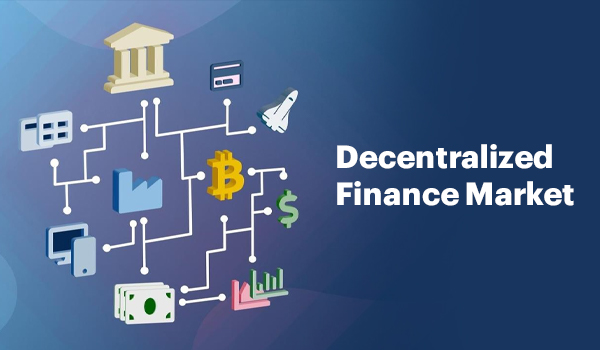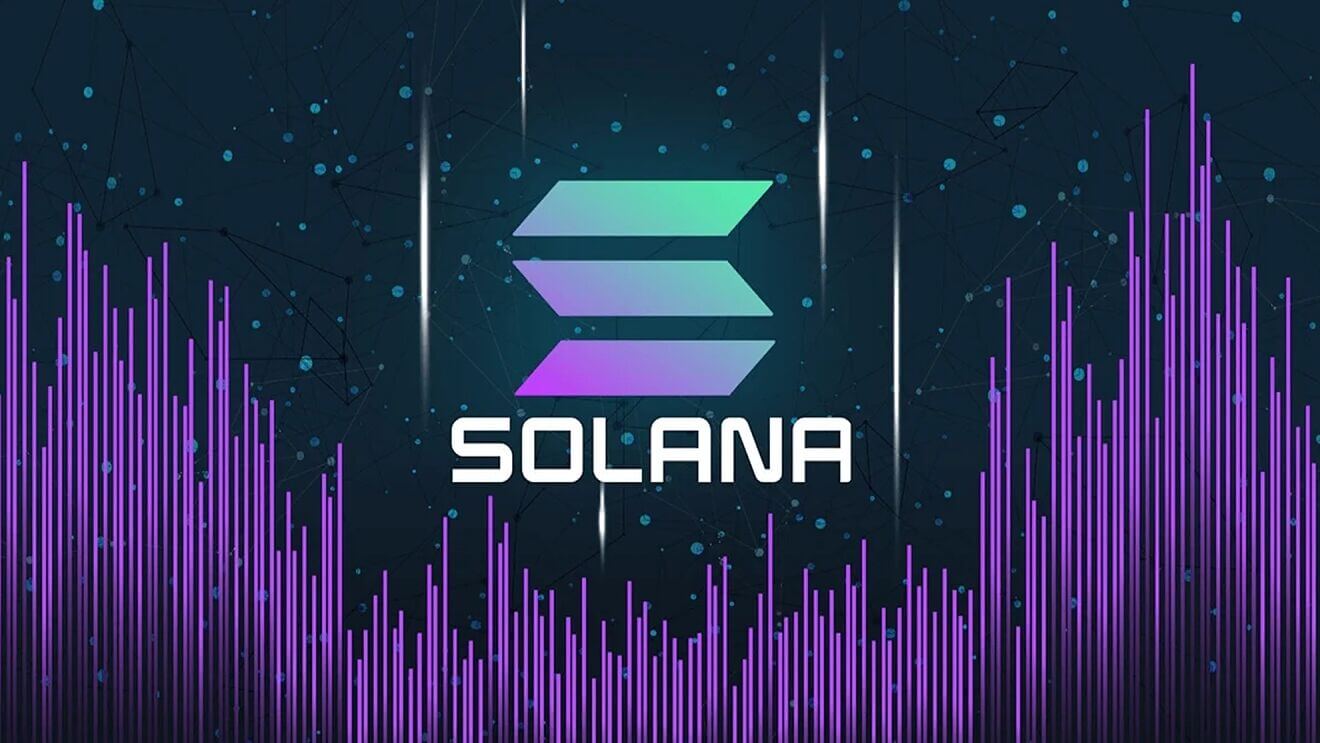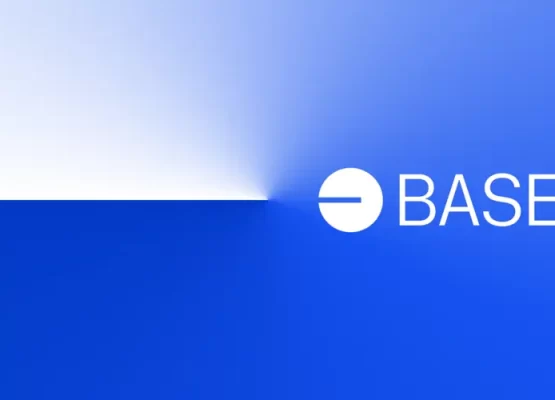Introduction
Decentralized finance (DeFi) is a revolutionary development in the world of finance, bringing new opportunities for financial access and inclusion to people around the globe. By leveraging blockchain technology, DeFi offers an open-source financial infrastructure that is transparent, secure, and permissionless — meaning anyone can access it without needing approval from any centralized authority.
This has opened up a new world of possibilities, enabling users to access financial services like lending, borrowing, and trading without relying on traditional financial institutions. DeFi also presents opportunities for developers to build innovative applications that can be used by anyone in the world, allowing them to interact with their finances in more diverse and creative ways.
From its humble beginnings in 2017 as a novel concept with only a few active projects, DeFi has grown into a vibrant and flourishing ecosystem. As of 2021, the total value locked in DeFi protocols is estimated to be over $48 billion, with nearly half of that going to decentralized exchanges (DEXs). The DeFi sector is also home to some of the most successful projects in the crypto space, such as Compound and MakerDAO, which have seen their valuations skyrocket in recent years.
Brief overview of the current state of the DeFi market
The decentralized finance (DeFi) industry is rapidly growing. According to DeFi Pulse, the total value locked in DeFi protocols has surpassed $20 billion and continues to climb. Many of the most well-known projects such as Maker, Compound, Aave, Uniswap and Synthetix are leading this growth.
Types of DeFi Platforms
- Decentralized exchanges (DEXs)
- Lending and borrowing platforms
- Stablecoins
- Yield farming and liquidity pools
- Insurance protocols
Decentralized exchanges (DEXs)
Decentralized exchanges (DEXs) are a type of DeFi platform that makes it possible to trade cryptocurrency and other digital assets through peer-to-peer (P2P) transactions. Unlike centralized exchanges, they do not require users to rely on third parties for their funds or orders. Instead, DEXs are trustless platforms where users can directly interact with one another and transact with each other without the need for an intermediary.
Types of DEXs:
- Automated Market Maker (AMM) DEXs (e.g. Uniswap, Sushiswap)
- Order book-based DEXs (e.g. 0x, Kyber Network)
- Hybrid DEXs (e.g. Bancor, Balancer)
Lending and borrowing platforms
Lending and borrowing platforms are the most popular type of DeFi platform. These platforms allow users to borrow and lend cryptocurrencies in a secured and trustless manner. The two main types are decentralized lending protocols (DLPs) and collateralized debt positions (CDPs). Decentralized lending protocols allow users to lend out their digital assets and receive interest payments, while CDPs enable users to borrow new funds with their digital assets as collateral.
Types of Lending and Borrowing Platforms:
- Decentralized lending and borrowing platforms (e.g. Aave, Compound)
- P2P lending platforms (e.g. NEXO, BlockFi)
- CDP (Collateralized Debt Position) platforms (e.g. MakerDAO)
Stablecoins
Stablecoins are one of the most popular types of DeFi platform. These cryptocurrencies are designed to maintain a stable value, usually by being backed by another asset or by being pegged to an external reference like a fiat currency.
Types of Stablecoins:
- Fiat-collateralized stablecoins (e.g. USDC, TUSD)
- Crypto-collateralized stablecoins (e.g. DAI, sUSD)
- Non-collateralized stablecoins (e.g. Ampleforth, Basis)
- Algorithmic stablecoins (e.g. seigniorage shares)
Yield farming and liquidity pools
Yield farming essentially involves providing liquidity to a system and in return you receive rewards proportional to your contribution, such as interest, token exchange or rewards. Liquidity pools are when users deposit their assets into a smart contract and then receive fees for doing so. These fees are typically generated by DeFi traders who use the liquidity pool to trade assets.
Types of Yield Farming Strategies
- Lending and borrowing: Lending crypto assets to earn interest and borrowing assets at a lower interest rate to lend out at a higher rate.
- Staking: Holding and “staking” crypto assets in a proof-of-stake network to earn rewards.
- Liquidity provision: Providing liquidity to a decentralized exchange (DEX) in exchange for trading fees and rewards.
- Token farming: Acquiring and holding a specific token to earn rewards in the form of other tokens or cryptocurrency.
- Arbitrage: Taking advantage of price differences between different DEXs or platforms to earn a profit.
Popular yield farming platforms and protocols
- Compound, Aave, MakerDAO for lending and borrowing
- Cosmos, Tezos, Ethereum 2.0 for staking
- Uniswap, Balancer for liquidity provision
- YFI, SUSHI for token farming
- 1inch, Tokenmom for arbitrage
Types of liquidity pools:
- Automated Market Maker (AMM) pools: These pools use a mathematical formula, typically a constant product market maker model, to determine the price of assets and to enable trading without an order book. The most popular AMM pools are Uniswap, Sushiswap, and Balancer.
- Order book-based pools: These pools rely on an order book to match buyers and sellers and to determine the price of assets. Order book-based pools are less decentralized than AMM pools because they rely on a central entity to maintain the order book. Examples of order book-based pools include 0x and Kyber Network.
Insurance protocols
Insurance protocols allow users to purchase insurance policies against a variety of events, such as price volatility and smart contract failure.
Types of Insurance Protocols:
- Smart contract insurance: insuring against losses caused by smart contract bugs and vulnerabilities.
- Deposit insurance: insuring against losses caused by a platform’s insolvency or a counterparty default.
- Index insurance: insuring against losses caused by market downturns or other systemic risks.
- Parametric insurance: insuring against specific events, such as natural disasters, using pre-determined parameters.
Benefits of DeFi
- Accessibility and inclusion
- Transparency and security
- Censorship resistance
- Interoperability
Accessibility and inclusion
Accessibility refers to the ability for individuals to easily access and participate in financial services, regardless of their location, credit history, or other traditional barriers. Because DeFi is built on open, decentralized blockchain technology, it enables anyone with an internet connection to participate in a variety of financial activities, such as lending, borrowing, trading, and earning interest on assets.
Inclusion, on the other hand, refers to the ability for individuals from underbanked or unbanked populations to participate in the global financial system. DeFi platforms can provide financial
services to individuals who may not have access to traditional banking services, such as those in developing countries or those who are denied access to traditional banking services due to their credit history.
Both accessibility and inclusion are important for creating a more equitable and inclusive financial system, and DeFi has the potential to significantly improve both by providing new opportunities for individuals to access and participate in financial services.
Transparency and security
Transparency refers to the ability for individuals to easily and transparently see the underlying mechanics and rules of the platform, as well as the current state of the platform, such as the positions and balances of all users. This is made possible by the use of smart contracts, which are self-executing contracts with the terms of the agreement written directly into the code. Smart contracts enable all transactions and activities on the platform to be recorded on a public blockchain, making them transparent and verifiable by anyone.
Security, on the other hand, refers to the ability for individuals to trust that their assets and information are safe on the platform. DeFi platforms use various security measures to protect users’ assets and information, such as:
- Cryptographic encryption: to secure users’ personal information and assets
- Smart contract auditing: to ensure that the platform’s smart contracts are free from bugs and vulnerabilities
- Decentralization: to prevent any single point of failure and to make it more difficult for hackers to compromise the platform
Censorship resistance
It refers to the ability for individuals to participate in financial activities without fear of censorship or interference from centralized entities such as governments, banks, or other organizations. DeFi platforms are built on open, decentralized blockchain technology, which allows for a decentralized network of users to validate and record transactions without the need for a central authority. This eliminates the possibility of censorship by a centralized entity, as there is no central point of control that can be targeted for censorship.
Interoperability
It refers to the ability for different DeFi platforms and protocols to work together seamlessly and to allow for the transfer of value and information between them. Interoperability is achieved through the use of open standards and protocols, such as the Ethereum blockchain, which allows for the creation of decentralized applications (dApps) and the use of a common set of tools and protocols to enable communication and interaction between different platforms.
Interoperability also allows for the creation of new financial instruments and services that can be built on top of existing platforms, such as lending and borrowing platforms, stablecoins, and yield farming protocols, and allows for cross-chain transactions and interaction with other blockchain networks.
Challenges and Risks
- Lack of regulation and oversight
- Smart contract vulnerabilities
- Liquidity and market manipulation
- Scalability and performance
Lack of regulation and oversight
Because DeFi is a relatively new and rapidly evolving field, there is currently very little regulatory framework in place to govern it. This can create uncertainty and risk for both users and developers of DeFi platforms. One of the main concerns is the potential for fraud and scams in the DeFi market. Without proper regulation and oversight, it can be difficult for users to distinguish legitimate platforms from those that are operating fraudulently. This can lead to significant financial losses for users who invest in or use these platforms.
Smart contract vulnerabilities
Smart contracts are self-executing contracts with the terms of the agreement written directly into code, they are used to automate various financial transactions and activities on DeFi platforms. However, because smart contracts are programmed by humans, they are subject to errors and bugs. These vulnerabilities can be exploited by malicious actors to steal funds or manipulate the platform in other ways. This has led to several high-profile losses of funds on DeFi platforms.
Liquidity and market manipulation
Liquidity refers to the ability to easily buy and sell assets on a platform. In the DeFi market, liquidity is often provided by users who “lock up” their assets in a liquidity pool in exchange for a share of the trading fees generated by the platform. However, low liquidity can make it difficult for users to enter or exit positions, leading to high spreads and volatility in asset prices.
Market manipulation refers to the act of artificially influencing the price of an asset through illegal or unethical means. In the DeFi market, market manipulation can occur through various methods such as wash trading, front-running, and insider trading. This can lead to an unfair advantage for certain users, and a lack of trust in the integrity of the market.
Scalability and performance
Scalability refers to the ability of a platform to handle a large number of transactions and users without experiencing delays or congestion. In the DeFi market, scalability is a major concern as the number of users and transactions on these platforms continues to grow at a rapid pace. This can lead to slow transaction speeds, high gas fees, and other issues that can make the platform less usable for users.
Performance, on the other hand, refers to the ability of a platform to perform its intended functions efficiently and effectively. In the DeFi market, performance can be affected by various factors such as network congestion, smart contract bugs and vulnerabilities, and insufficient liquidity. These can lead to delays, errors, and other issues that can negatively impact the user experience.
Future outlook for the DeFi market
According to latest research study by Emergen Research, the global Decentralized Finance (DeFi) platforms market size is expected to reach USD 507.92 Billion at a steady CAGR of 43.8% in 2028. One of the main drivers of this growth is the increasing interest and participation from institutional investors and mainstream financial institutions. As DeFi platforms continue to mature and demonstrate their potential for providing real-world financial services, more institutional capital is expected to flow into the market, further fueling its growth.
Additionally, the continued development and expansion of the DeFi ecosystem, including new platforms, protocols, and use cases, is expected to drive further adoption and engagement from users. This is particularly true as more and more traditional financial services and products are being replicated on DeFi platforms, making them more accessible and convenient for users.
The growth of DeFi is also expected to drive innovation in the broader blockchain and crypto space, as well as in other areas such as digital identity, privacy, and more.
Conclusion
In conclusion, decentralized finance (DeFi) has the potential to revolutionize the way financial services are provided and accessed. With its use of open, decentralized blockchain technology, DeFi platforms offer new opportunities for individuals to access and participate in financial services, regardless of their location or credit history.
DeFi platforms include a variety of different types, such as decentralized exchanges (DEXs), lending and borrowing platforms, stablecoins, yield farming and liquidity pools, and insurance protocols. Each type has its own set of benefits, use cases and potential risks.
However, despite its potential, the DeFi market still faces several challenges, including lack of regulation and oversight, smart contract vulnerabilities, liquidity and market manipulation, scalability and performance. These challenges need to be addressed in order for the DeFi market to continue to grow and mature.
Overall, the future outlook for the DeFi market is highly positive, with experts predicting significant growth and adoption in the coming years. As the DeFi ecosystem continues to evolve and mature, it has the potential to drive innovation and bring about real-world change in the way financial services are provided and accessed.




